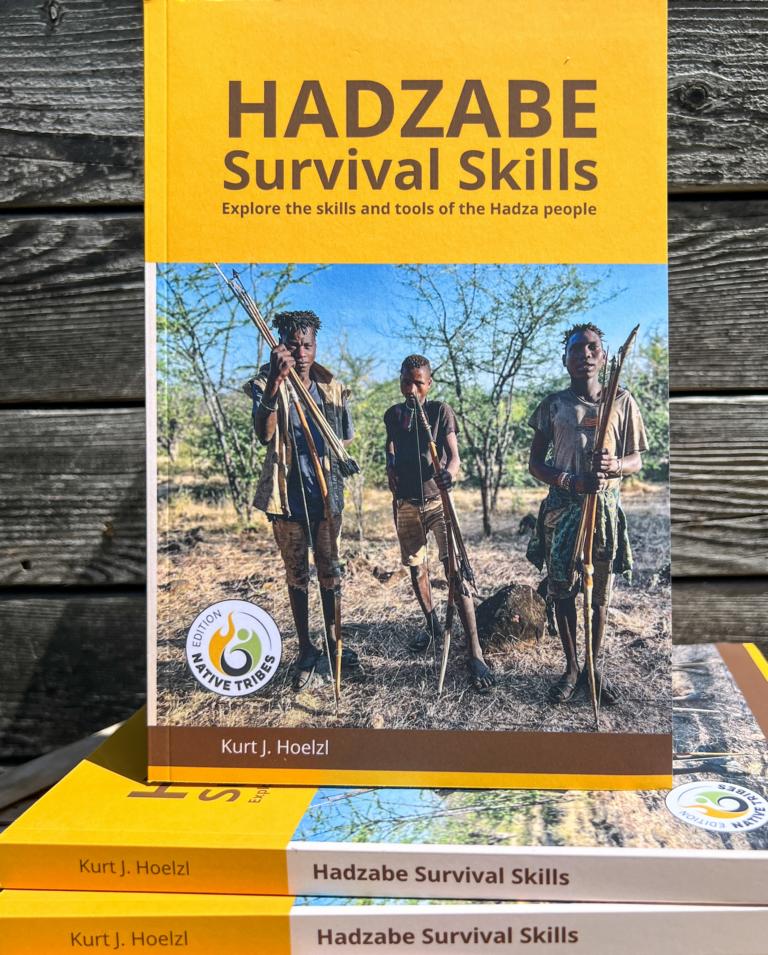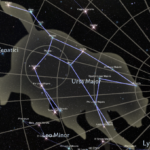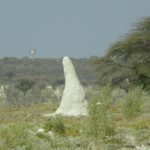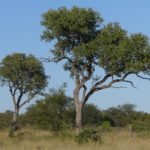The Constellation of Orion, or ‘The Hunter’ can be best viewed in the evening skies from November to February. It holds for both the Northern and Southern hemispheres during that time. Of the three belt stars, the highest one is called Mintaka. The middle one is called Alnilam, and the lowest (relative to shoulder- and knee stars) is called Alnitak. Between the belt and knee stars is the Great Nebula, which forms the sword of the ‘Hunter’. And the ‘knee ‘-stars are Rigel and Saiph.
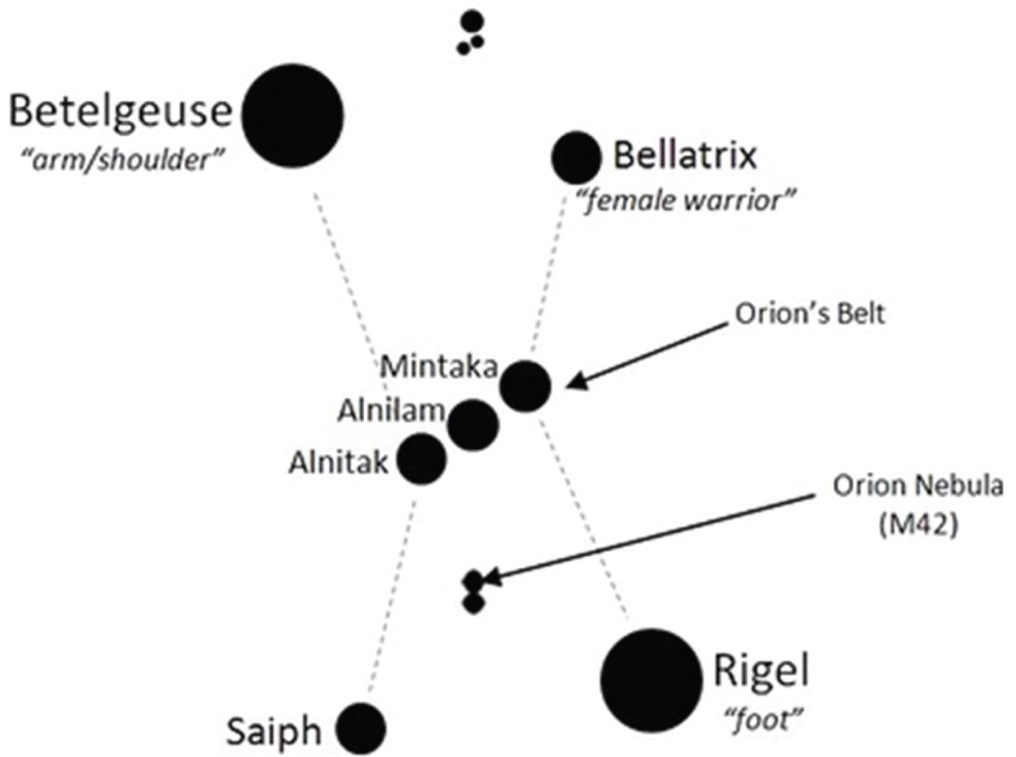
How do you use Orion to find the direction?
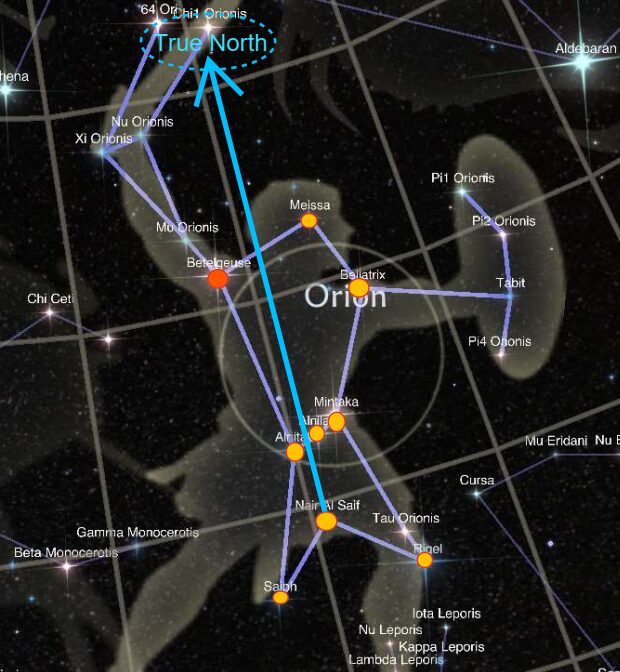
- Drawing a line from the brightest star within the Great Nebula via a point halfway between Alnitak and Alnilam will show the direction of True North.
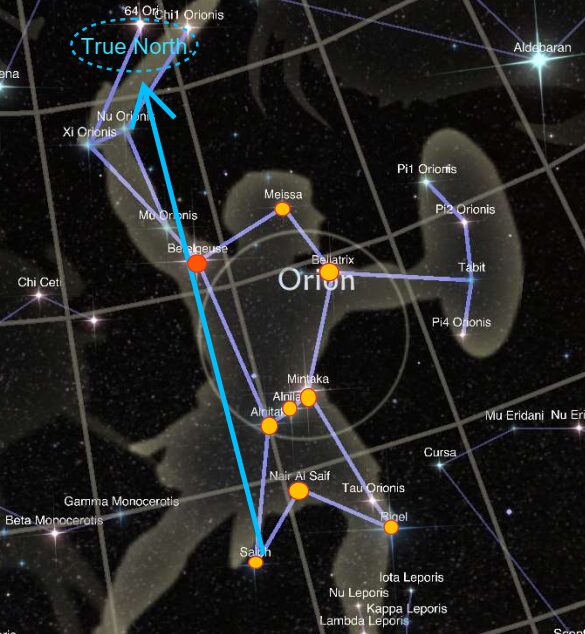
- Alternatively, a line connecting the right knee star (Saiph) with the right shoulder star (Betelgeuse – the big red star) will also indicate correctly True North. ‘Right’ in this connection means the right side of the figure displaying Orion – which is the left side of the figure as seen by the observer.
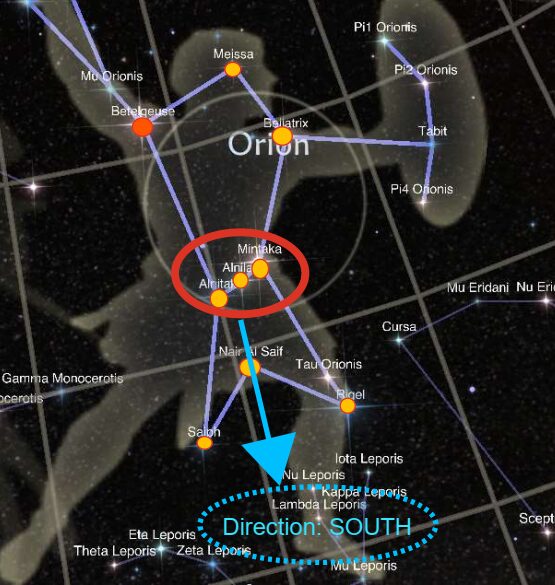
- The Hunter’s sword (Great Nebula) will always point from the belt to an approximately southern direction.
This website also described the following constellations: Pole Star, Scorpius, and Southern Cross.
Lessons learned about finding direction with Orion
- The constellation of Orion is only visible for about half a year in the night sky. It is invisible the rest of the year due to its appearance in the day sky.
- The best time to see Orion in both hemispheres is from November to May.
- Draw a line from the brightest star within the Great Nebula via a point halfway between Alnitak and Alnilam, showing an approximately northerly direction.
- Connecting the right knee star (Saiph) with the right shoulder star (Betelgeuse – the big red star) will also indicate correctly True North.
- And the sword of the Hunter always points from the belt to the South.
Further readings about Constellation of stars on this website:
Constellation Scorpius at the Southern sky
Finding True South in the Southern Hemisphere
Finding direction with the Pole Star
.

